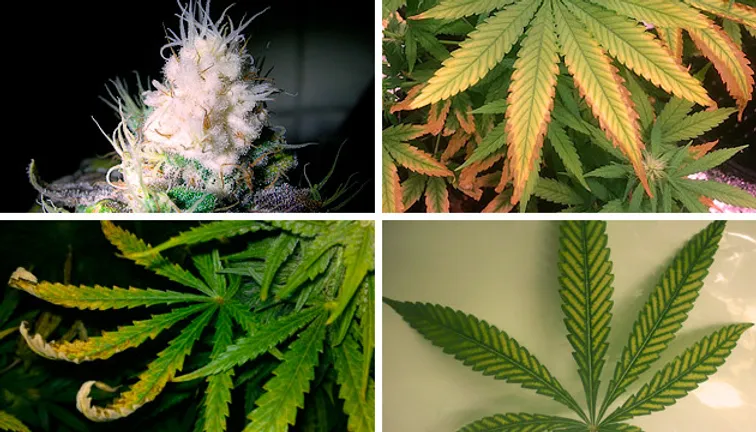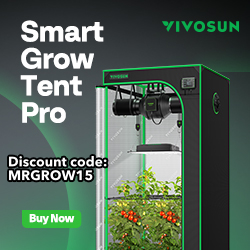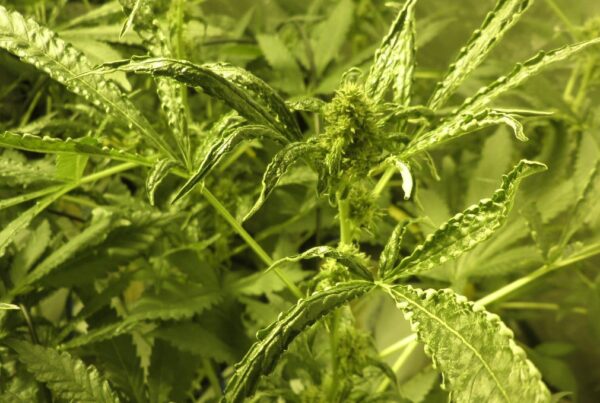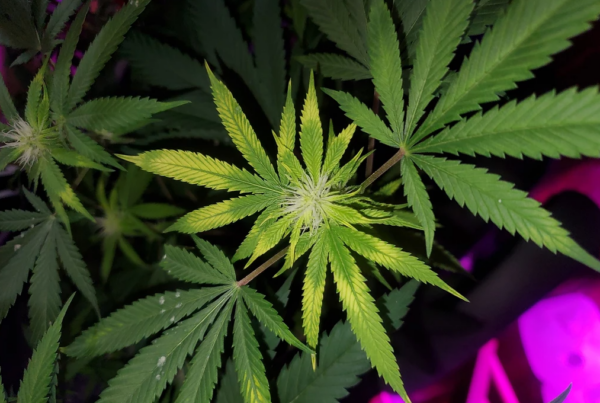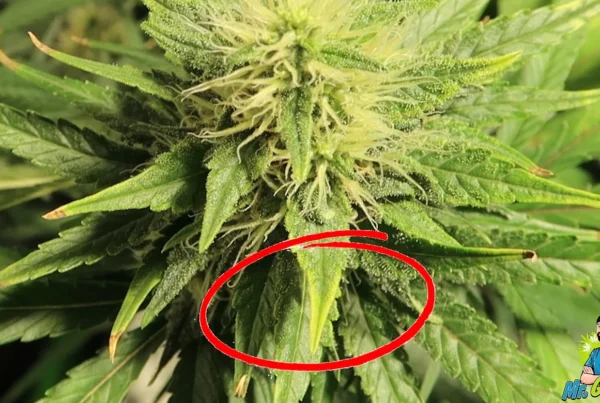Lighting is arguably the biggest contributing factor to plant growth. One possible issue that you can face due to lighting is light stress or light burn. This problem is more likely to occur on indoor plants but knowing the causes and preventative measures will help you improve your setup and your plants’ overall health. Fixing this issue will not only result in plant recovery, but will also help ensure you are not losing potency in your buds.
You can use the information in this article to make informed decisions that will help avoid and fix light burn/stress caused by light hitting your cannabis plants. But before you make any changes, it is crucial to make a correct diagnosis.
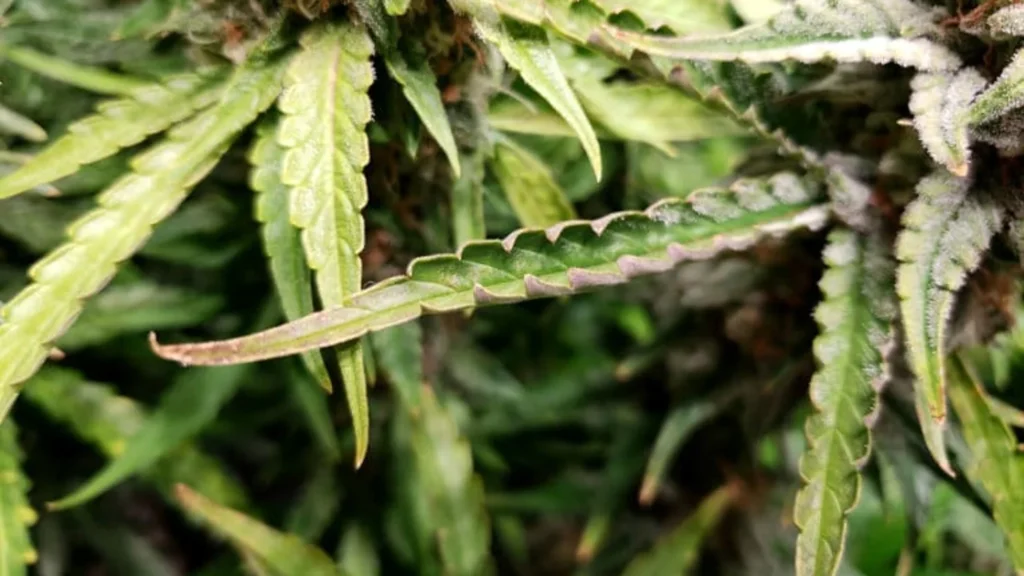
Symptoms of Light Burn/Stress in Cannabis Plants
If you don’t have a lot of experience growing cannabis, it can be difficult to correctly identify a problem as the symptoms of issues can be very similar. Here are a few pointers that will help you detect if your plant is under stress from too much light:
- Initial signs of light burn show up in the leaves that are close to the light or at the top. The leaves may not turn yellow, but instead, the tips may be strangely pointing upwards in the beginning.
- As the problem continues, leaves start to turn yellow. The leaves that are more exposed to the light will be lighter in color in comparison to other leaves.
- Leaves (and particularly tips of the leaves) turn yellow but upon close inspection, you will notice that the veins stay green.
- The leaves may start curling upwards to in order to shade themselves. Leaves lose their luster and become crispy. The leaves may appear burnt with brown spotting.
- Buds may also start bleaching and may even turn bright white. Bleaching reaps the potency from the buds – making them useless.
It is easy to mix up nitrogen deficiency with light burn. A major differentiating pattern is that when leaves are deficient in nitrogen, they turn yellow and fall off while leaves with light burn do not wilt and do not fall off unless plucked. Another difference between these two problems is that with nitrogen deficiency, yellowing starts at the bottom of the plant, whereas, with light burn it commonly starts at the top.
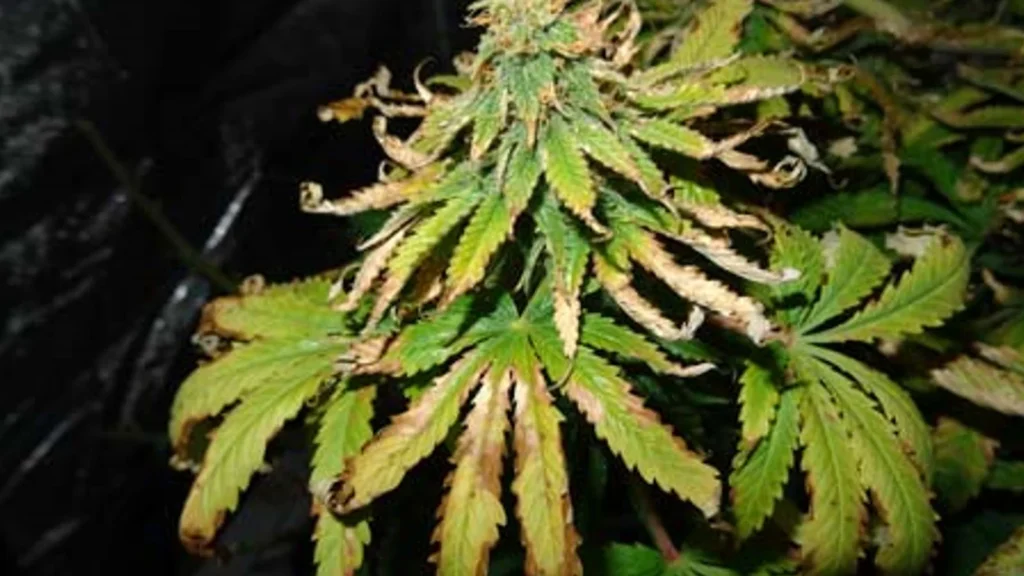
How To Prevent Light Burn/Stress in Cannabis Plants
The term ‘light burn’ or ‘light stress’ is self-explanatory but how much light is too much? What changes should you make in your grow room to ensure that your plants are getting just enough light? Too much of a good thing can be bad. Here are a few steps that you can take to prevent light burn/stress in your cannabis plants:
- Light burn is usually caused by the grow light being too close to the plant. Do this basic hand test; keep your hand under the light at canopy level to see if it is causing any irritation or discomfort on your skin. If it is too hot, this most likely means that your plant is getting too much light. The grow light should be raised so it is further away from your plants.
- If you have moved your plant recently, ensure that the amount of light it is getting now is in close proximity with the conditions in its previous environment – or else it may show signs of light stress.
- Know your grow lights! It is vital to do a bit of research on the kind of grow lights that you have in your setup. Different grow lights require different distances from the top of your plants and knowing those distances will lead to optimum yield.
- It is always a good idea to be extra cautious and buy a LUX or PAR meter as it can accurately determine how much light your cannabis plant is getting. The suggested lux levels for optimal yield are between 30,000 to 70,000 lux/m2 when the plant is in the vegetative stage and between 50,000 to 90,000 lux/m2 when the plant is in the flowering stage. The suggested PAR levels for optimal plant growth is 200-400 PPFD for seedlings/clones/mother plants, 400-600 PPFD for plants in the vegetative stage, and 600-900 PPFD for plants in the flowering stage. If supplementing CO2, you can go a bit higher than that.
- If you are growing in limited space, be proactive and plan the setup. Start low-stress training early on to avoid light burn later.
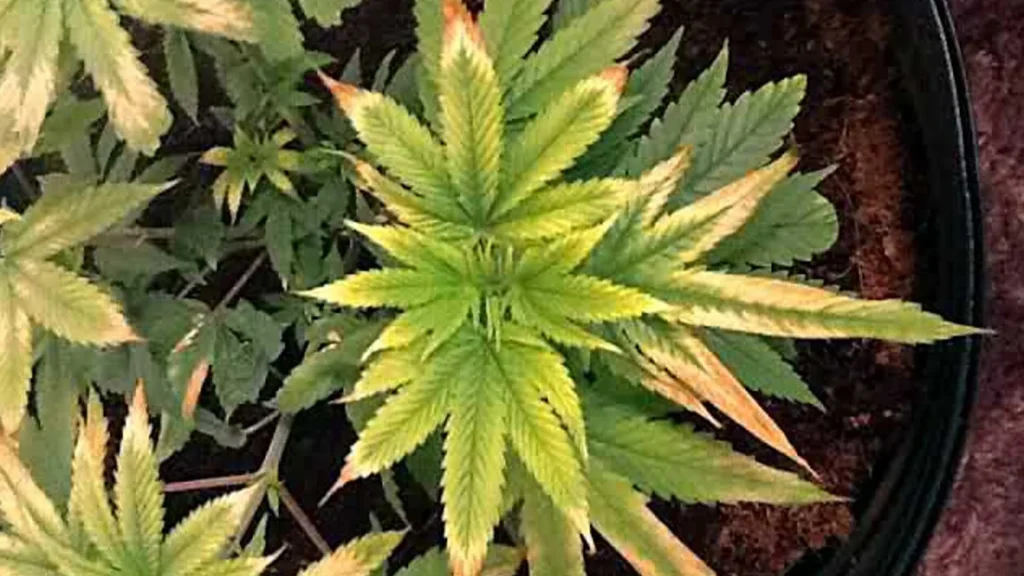
How To Fix Light Burn/Stress in Cannabis Plants
If you find that your plant has signs of light burn/stress, here are a few steps that you can take to put it on the path to recovery:
- Make changes in your grow room and move lights further away from the affected plant. Use a lux meter, PAR meter, or do a hand test to ensure that the grow lights are at the correct distance.
- If you are growing in a limited space and do not have any vertical space left to adjust your lights, do plant training techniques such as low-stress training or topping to increase the light distance and maintain an even canopy.
- If the problem is detected early on, it takes about a week or two for your plant to recover or show signs of recovery.
Key Information About Lighting For Plants
The goal is to get thick and dense buds without causing any light burn/stress in your cannabis plants. But keeping your grow lights as close to the plants as you can could easily result in problems. It is important to know how far each type of light should be kept from your plants. Here are a few types of grow lights that you can use to grow cannabis plants:
- Metal Halide (MH) and High-Pressure Sodium (HPS)
- Light Emitting Ceramic (LEC) / Ceramic Metal Halide (CMH)
- LED
- Fluorescent Grow Lights
Each of these types of lights have different recommendations when it comes to the distance from the cannabis plant. This distance mostly depends on the wattage of the light. Here is a cheat sheet that you can refer to as a general guide for light distance:
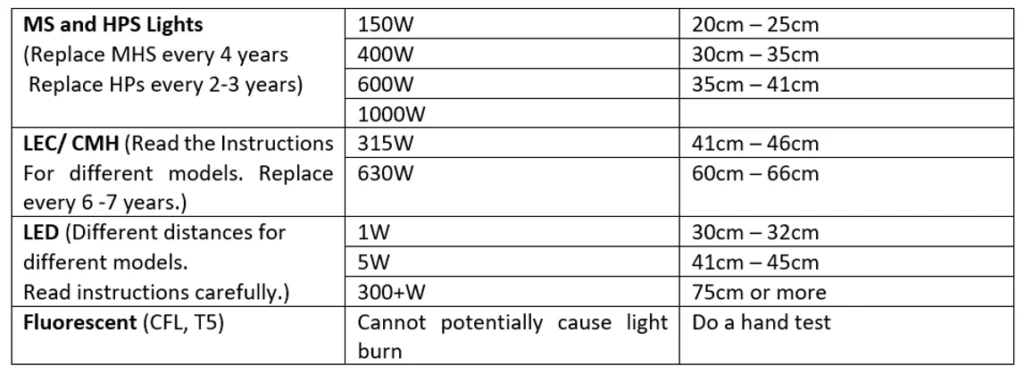
You now have a basic understanding of what light burn/stress is, the symptoms, preventative measures, and solutions. Make some changes in your grow room if required. Also, don’t forget to give your cannabis plants some love and monitor them regularly to keep them healthy and thriving.
![]()

